Hyperion is the latest entry in our quarterly rollup series. It branches off from our main rolling Voyager development into a fixed target for our partners to qualify and build upon.
This Quarterly release is named after Saturn's moon Hyperion. Fun fact: Hyperion is potato shaped and its deeply cratered surface resembles a sponge. Hyperion rotates chaotically, tumbling unpredictably through space as it orbits Saturn.
As for the software, Comet 25.5.0 Hyperion brings 3 new features and 9 enhancements, including automatic Storage Vault unlocking, automatically switching jobs to use on-disk indexes, a new option to backup everything in a Microsoft 365 domain, and more.
As always for a new quarterly release, there are two changelogs for 25.5.0 depending on whether you are coming from the previous quarterly release or the previous Voyager release:
Changes compared to 25.2.4
NOTE: The Impossible Cloud eu-central-1 region has been deprecated. Existing Storage Vaults and Storage Templates using this region will remain configured.
New Features
Safe vault unlocking via key rotation
As part of our efforts to improve the experience of using Comet, we have added functionality to automatically change Storage Vault access keys for some of our supported storage providers, allowing admins to manually unlock compatible Storage Vaults without the risk of data loss.
Vaults can also be automatically unlocked when specified criteria, configured in user policy settings, have been met.
The following Storage Vault types are currently supported:
- Comet Storage
- Amazon AWS
- Wasabi
- S3 Generic
- IAM Compatible
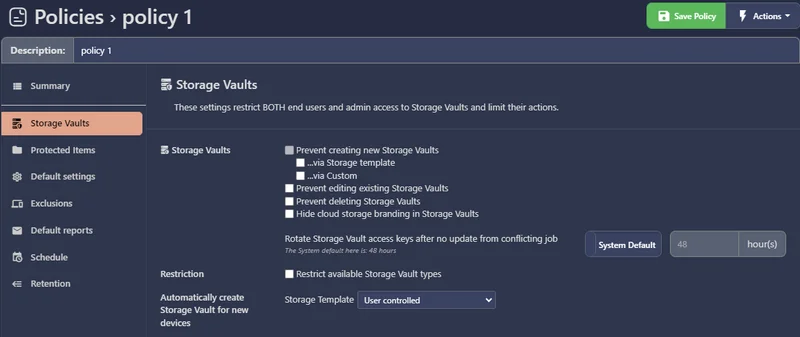
Bulk Cancel Jobs using Comet Management Console
It is now possible to cancel running jobs in bulk from the Job Logs page on a Comet Management Console. This is an effective way to stop all currently running backup jobs with one click.
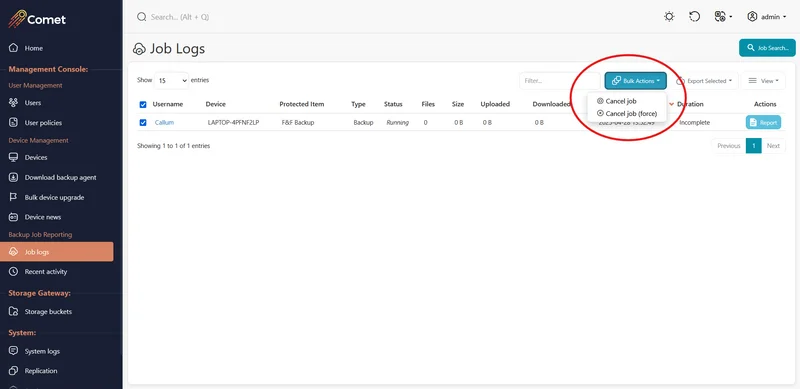
Automatically Switch Jobs To Use On-Disk Indexes
Comet makes use of in-memory indexes to optimise backup and retention pass jobs to maintain a list of where the data is in the Storage Vault. For larger Storage Vaults, this can lead to a large amount of data held in memory. On devices that have a lower amount of RAM, this can cause a job to fail as there is not enough available memory to complete the job. Comet's solution is to store the indexes on-disk using temporary files instead. This is because devices can often have more free disk space than available RAM.
When a scheduled backup or retention pass requires more RAM than is available, Comet will now automatically switch to store the indexes using temporary files on disk.
Enhancements
Annual schedule and retention options
Comet has added support for setting yearly schedules and retention rules - great for long term storage, archival, and compliance requirements.
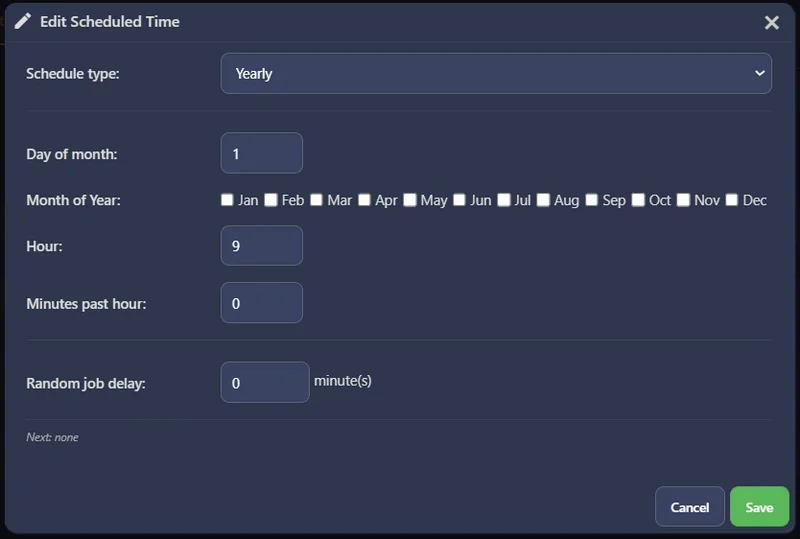
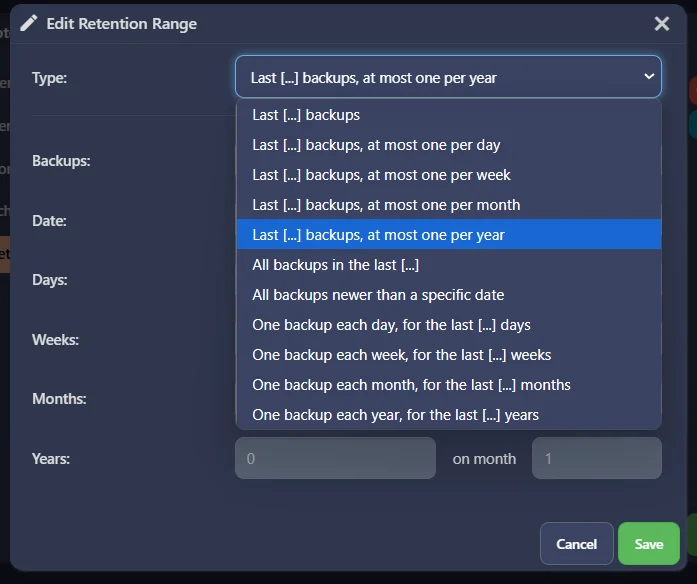
Linux recovery environment ISO can now be built without Docker on Linux
Creating the Linux recovery environment ISO using Comet Backup on a Linux endpoint can now be done without requiring Docker to be installed. This simplifies the install requirements to build the Linux recovery environment and also reduces how long it takes to build the recovery environment.
Linux Disk Image snapshot driver now installs automatically
Comet uses a custom Linux kernel driver backupsnap61 to snapshot a block device during a Linux Disk Image Protected Item backup.
In previous releases, backupsnap61 had to be installed manually using the backupsnap61-install.sh script found in the Comet Backup install directory.
Without backupsnap61 installed, Comet can't guarantee it can get exclusive read access to a block device. This will appear as a warning in a Linux Disk Image backup job log.
Now, backupsnap61 is installed automatically by Comet to ensure a snapshot driver is always available before starting a Linux Disk Image backup.
VMware Protected Items configured using Changed Block Tracking can now fallback to a full backup
VMware Protected Items that have been configured to use the Latest VM state (Changed Block Tracking) mode will now fallback to performing a full VM backup when Comet detects that more than 50% of the disk has changed. This speeds up the backup peformance when large parts of the VM has been modified.
New option to back up everything in a Microsoft 365 domain
In previous versions of Comet, the "Select all except..." option for Microsoft 365 Protected Items was provided as an alternative way to select accounts, allowing for the automatic inclusion of new accounts and potential exclusion of others. User feedback was that the behaviour of this option was unintuitive, and so we have elected to remove this option in favour of a more intuitive alternative.
We are introducing the new "Back up everything" option for Microsoft 365 backups. This option provides a simple way to back up everything within a domain, including any accounts that are added later.
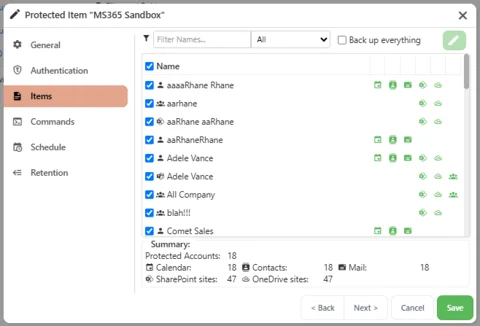

To back up everything with exceptions, users should instead create a group in Microsoft 365 and have the group auto-assign to new accounts. Users to be excluded can be removed from the group, and this group can then be selected in Comet.
Faster retention passes
Comet has made substantial performance improvements for retention passes on several storage types when large numbers of files become eligible for deletion.
New Translations
Comet has updated the translations for 13 languages. These are Danish, German, Spanish, French, Hebrew, Croatian, Italian, Dutch, Portuguese (Brazil), Portuguese (Europe), Russian, Polish and Thai.
Comet Backup Desktop App Windows Tray Icon "Show Interface" Changes
When the policy setting "Prevent opening the application interface" is enabled, clicking the "Show Interface" button from the Comet Backup desktop app tray icon on Windows will now open the login dialog prompt.
This change allows another user to log into Comet Backup. Previously, this button had no action.
Changes compared to 25.3.8
- No changes